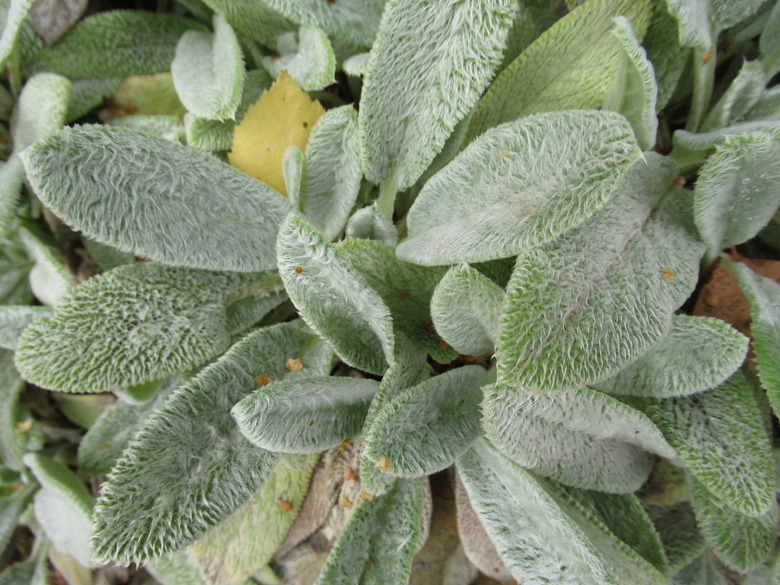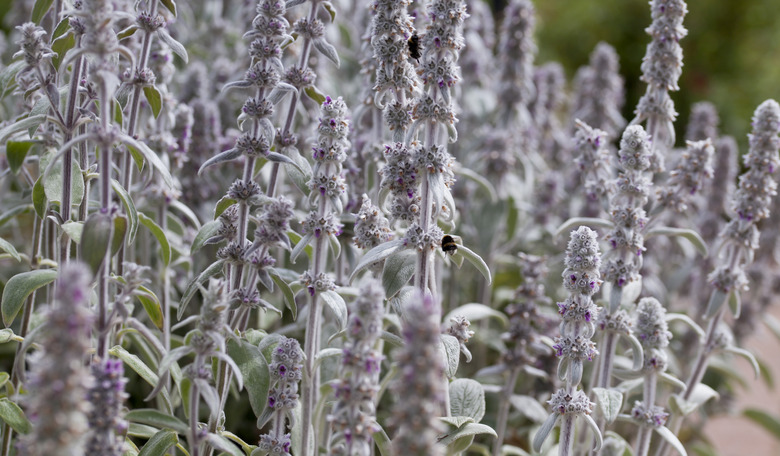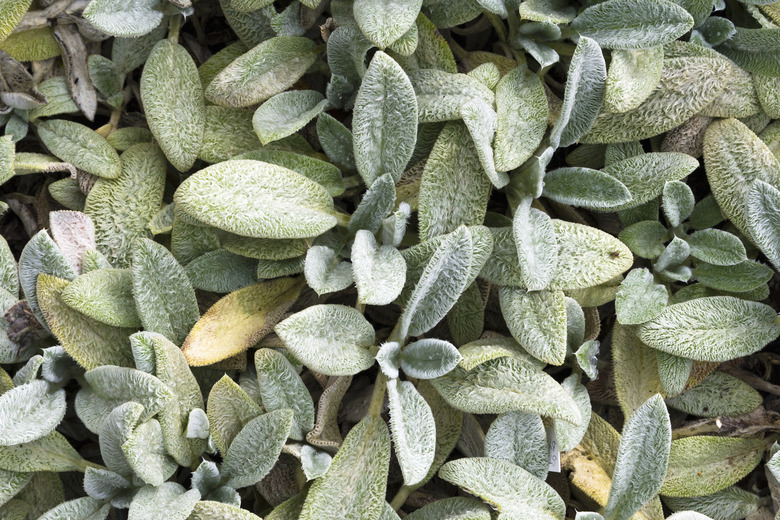How To Care For Lamb's Ear Plants
Learning to care for lamb's ear plants will help you keep these lush, low-maintenance plants looking good year round.
Sometimes called donkey ears or betony, lamb's ear (Stachys byzantina) plants grow best in USDA plant hardiness zones 4a to 9b. They are grown for their silvery green leaves and low, spreading growth habit, which makes them attractive and drought-tolerant groundcover plants.
Lamb's ear plants need little care or attention when planted under good growing conditions. However, these showy herbaceous perennials look better when provided with pruning, regular watering and occasional dividing.
Planting Lamb's Ear Plants
Where you plant a lamb's ear plant affects how well it grows and how much upkeep and care it needs. Sun exposure, drainage and soil type are the most important factors when choosing a garden bed.
Sun Exposure
Lamb's ear grows best in full sun, but it benefits from partial shade during the hottest part of the day when growing in a hot climate.
Heavy shade should be avoided when growing lamb's ear plants, because it increases the likelihood of disease and causes leggy growth.
Soil Type and Drainage
Lamb's ear plants are not fussy about soil type and will tolerate poor to moderately fertile soil with no problem. Well-draining soil is a must, however, because wet soil will lead to problems such as root rot and powdery mildew.
- Plant lamb's ear in early spring or autumn in mild winter climates. In spring, wait until the soil is workable.
- Weed the planting site and till the soil a week or so before planting. There is no need to amend the soil unless it is very sandy; in that case, add a 2-inch layer of compost to the top 8 inches of soil.
- Space lamb's ear plants 12 to 18 inches apart, depending on the mature size of the cultivar and how you are using the plant.
Caring for Lamb's Ear Plants
Lamb's ear plant care focuses on watering and pruning, which will help keep the plant looking tidy. These moderately fast-growing plants also need occasional dividing to reinvigorate their foliage production and help keep their growth in check.
Tip
Fertilizer is not needed and can cause excessive, leggy growth in lamb's ear plants.
Watering Lamb's Ear
Watering is perhaps the most important part of growing lamb's ear plants, especially in hot, dry climates.
- New plants need 1 inch of water each week during the growing season from spring until late summer. Water at the base of the plant rather than from overhead to keep moisture off the leaves.
- Established lamb's ear plants will survive with no watering in all but the hottest climates, although watering during especially hot weather improves blooming and keeps the foliage healthy.
- Water lamb's ear only when the soil feels dry below the surface. If the soil feels damp, don't water.
Tip
A 2-inch layer of mulch spread between the plants will help keep the soil moist and decrease the need for watering.
Pruning Lamb's Ear
Pruning and deadheading lamb's ear plants is an important part of their care. Be sure to wash your pruning shears beforehand and wipe down the blades with disinfecting cleaner to kill any harmful bacteria or fungal spores.
Removing Dead Foliage
Lamb's ear is grown for its woolly, silvery foliage, which can take on a ragged appearance as it matures. Removing the old, damaged leaves makes way for soft new growth and immediately improves the look of the plant.
- Prune away any damaged leaves as they appear during the growing season.
- Pinch off the leaves with your fingers or snip them off where they connect to the plant using sharp pruning shears.
Deadheading Lamb's Ear Plants
Flowering varieties of lamb's ear, such as Big Ears (Stachys byzantina 'Big Ears,' zones 4 to 9), produce thick stalks lined with purple flowers or light pink flowers during the summer months. Deadheading after the flowers fade helps keep the plant looking tidy and prevents self-seeding.
- Snip off the entire flower stalk rather than the individual blooms. Wait until most of the blossoms have faded before removing the flower spikes to allow pollinators to feed on the nectar.
- Cut off the flower stalk at the base at the base using sharp, clean pruning shears. Wipe down your pruner blades with rubbing alcohol when pruning between plants.
Tip
To avoid deadheading, plant non-flowering lamb's ear varieties such as Silver Carpet (Stachys byzantina 'Silver Carpet,' zones 4 to 9).
Dividing Lamb's Ear
Lamb's ear needs to be divided every 2 to 4 years to reinvigorate its growth. Division should be done in spring before the plant blooms, but it can also be done in autumn in mild, frost-free climates. These plants are forgiving of the process, and the divisions root quickly after planting.
- Dig up the plant using a sharp shovel, lifting as much of the root ball as possible.
- Cut the healthy outer edge of the plant into fist-size clumps, each with a share of roots and leaves. Throw away the old, woody center of the plant.
- Transplant the divisions into a sunny garden bed with well-draining soil. Space them 12 to 18 inches apart, as you would with plants bought from nurseries.
- Keep the soil moist for the first few weeks after planting lamb's ear divisions so that they do not dry out and wilt during the rooting process.


